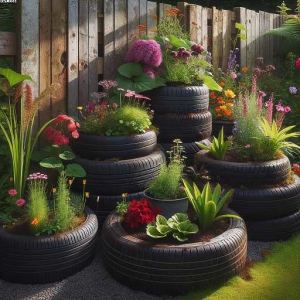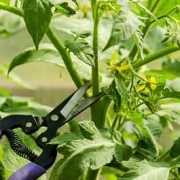Lumatek Zeus Pro Lighting
Lumatek Zeus Pro Lighting
6 reasons to use LED lights in your greenhouse
- Providing supplemental lighting for plants: LED lights can be used to provide additional light to plants in a greenhouse, particularly during the winter months when natural light levels are lower. This can help promote healthy plant growth and flowering.
- Controlling temperature: LED lights can be used to heat a greenhouse during cold weather, helping to maintain optimal growing conditions for plants.
- Improving plant growth and yield: LED lights can be used to improve the growth and yield of certain crops by providing the specific wavelengths of light that they need for optimal growth.
- Reducing energy consumption: LED lights are highly energy efficient and can help reduce the energy costs of operating a greenhouse.
- Improving the appearance of the greenhouse: LED lights can be used to create a visually appealing environment in the greenhouse, enhancing the overall aesthetic of the space.
- Improving safety: LED lights can help improve safety in the greenhouse by providing bright, consistent lighting that makes it easier to navigate the space and identify any potential hazards.
Lumatek Zeus Pro Lighting
Why use LED lighting
Well, in my opinion, the cost of running your lighting has got to be among the main reasons for updating your equipment. So as time goes by, there are thousands of inventors looking for new ways to improve things. In my opinion, this is the next step forward in growers’ lighting.
Indeed, there are many reports from manufacturers that say the LED lights can save as much as 40%. In comparison to the energy used by the old-fashioned lighting equipment that many people still use, Also, the growing area that is lit up using LED will, of course, generate a higher yield per kWh. My own experience is that a friend who is a keen grower of all sorts of plants had a surplus LED light unit. He offered the light at a good price, and so I snapped his hand off. The unit is just plug-and-play and simple to install.
Used LED for the first time
Last winter was the first time that I used the new LED lights in my citrus plants overwintering greenhouse. So, the light emitted from the LEDs was a very bright white light. My older lights were, of course, orange-coloured. Combined with a good greenhouse heater, my plants overwintered perfectly. Consequently, I added two hours of daylight at each end of the day. So giving my lemons and oranges the extra daylight they require.
My plants are put out in the summer, and I then grow my tomatoes and peppers. Incidentally, my friend had bought a new Lumatek LED light unit, which is rated at a tremendous 60,000 hours. I was happy to buy his old LED unit for my first step into LED growing. However, he upgraded to the Lumatek, giving him a 5 year warranty.
Lumatek LED, s highly efficient
One of the first things I noticed about LED lighting was how cool they ran at. The Lumatek also operates at high efficiency with much less wattage. That means less heat release, lower gardening costs (which keeps the wife happy), and lower electric bills.
My friend is certainly impressed with his Lumatek Zeus Pro Led lighting setup. giving Scott, my friend, more powerful grow lights. Another added advantage of Lumatek LED lights is that they can be dimmed. Accordingly, adjust the PPF level. Naturally, to suit the crop and the growth stages. This is without changing or losing efficiency.
Flexible light intensity;
Lumatek LEDs can be turned down to change the PPF level to fit the crop and its growth stage. This doesn’t change how the spectral power is distributed or make them less effective. Of course, LED lighting is the future and is already in the process of overtaking the HPS lighting market. Because of the way that the multiple light strips are designed, the diodes are spread right across the canopy. This spreads out the light, giving it an almost perfect footprint.
So, the type of lighting that the Zeus product emits is as close as possible to natural sunlight. Of course, something that’s most beneficial to your plants Finally, once the Lumatek LEDs are up and running, you won’t ever have to change a lamp again. This should save you more than £1000 per year!
These lights are available from many hydroponic stores online, and callers are welcome.


